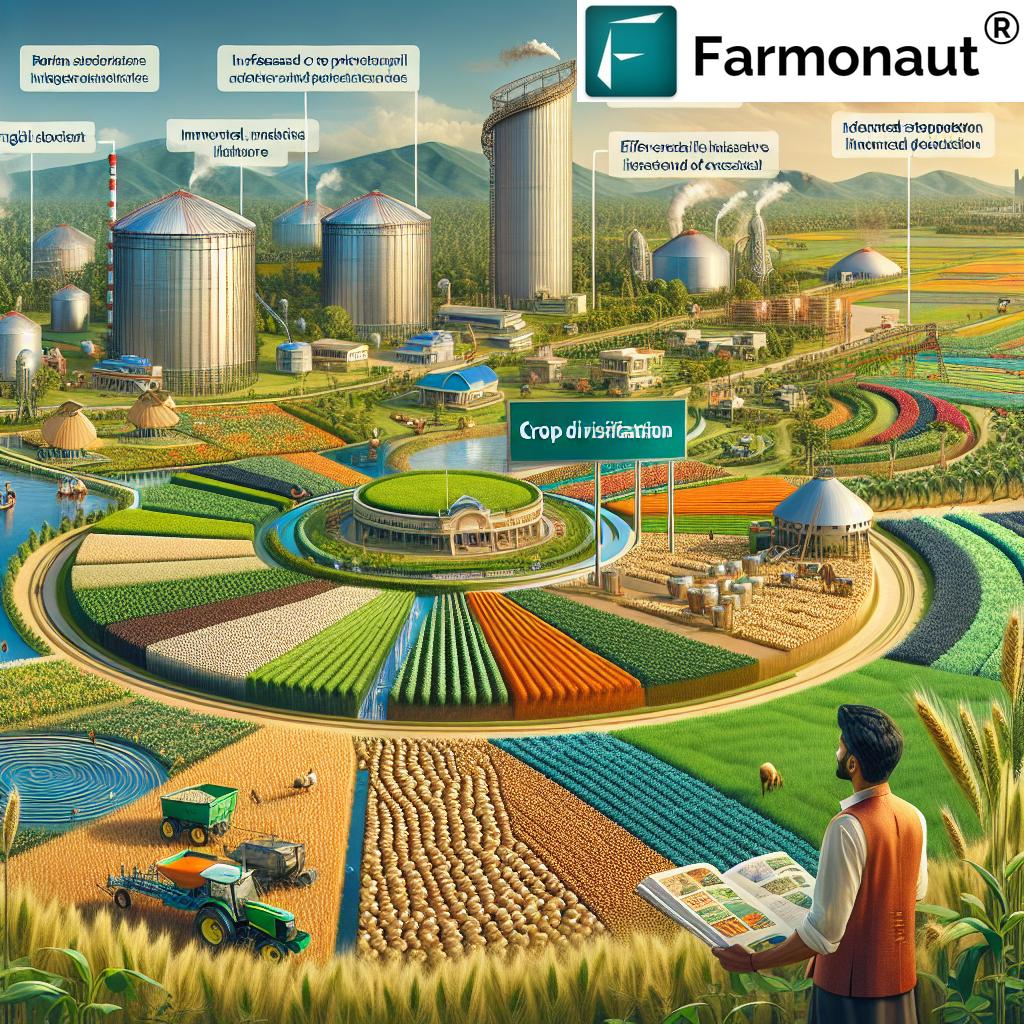India Union Budget 2025-26 Agriculture Allocation Update: Trends, Schemes & Sustainable Growth
“India’s Union Budget 2025-26 allocates over ₹1.5 lakh crore to agriculture, marking a 12% increase from last year.”
The india union budget 2025-26 agriculture allocation has arrived at a pivotal moment for the agricultural sector. As we explore the core priorities, highlights, and new initiatives packaged in the agriculture ministry budget allocation fy25 india, it becomes clear that the government’s renewed focus is not just on immediate relief, but on laying a strong foundation for sustainable, productive, and tech-empowered growth for Indian farmers. In FY25-26, the sector continues its central role as the nation’s backbone—supporting food security, rural livelihoods, and the broader economy. This comprehensive blog breaks down the key elements of the union budget 2025-26 agriculture allocation india, details flagship schemes, analyzes critical trends, and offers actionable insights for all stakeholders.
Table of Contents
- Agriculture Ministry Budget Allocation FY25: An Overview
- Comparative Allocation Summary Table
- Key Focus Areas – Union Budget 2025-26 Agriculture Allocation India
- Investment in Irrigation & Water Management
- Boosting Agri-Tech & Digital Agriculture
- Support for Small and Marginal Farmers
- Enhancement of Agricultural Credit & Input Subsidies
- Promotion of Sustainable and Organic Farming
- Market Infrastructure & Farmer Producer Organizations (FPOs)
- Farmonaut: Empowering Digital & Sustainable Agriculture
- Implications of the Union Budget 2025 for Indian Agriculture
- Frequently Asked Questions
- Conclusion
Agriculture Ministry Budget Allocation FY25: An Overview
The agriculture ministry budget allocation fy25 india for the fiscal year 2025-26 is a robust indication of the government’s commitment to the sector. The budget lines reflect not just fiscal intent but an overarching strategy to enhance production, farmer welfare, sustainability, and technological empowerment.
Key Numbers – Agriculture Ministry Budget Allocation FY25:
- Overall allocation: ₹2.1 lakh crore.
- Marking a 12% increase over the 2024-25 figure.
- Substantial outlays for irrigation, digital support, input subsidies, market infrastructure, and sustainable practices.
Context:
- Over 55% of India’s population relies on farming for livelihoods.
- Agriculture contributes roughly 18-20% to India’s GDP.
- The sector is the crucial pillar for food security and the ultimate testbed for sustainable, climate-smart practices.
Summary Thought: This enhanced allocation is aligned with goals to double farmer incomes by 2026, boost productivity via scientific and technological means, and modernize rural infrastructure. The broad coverage across schemes ensures immediate welfare and seeds long-term transformation.
Comparative Allocation Summary Table: Agriculture Budget Allocation India 2025-26
| Scheme/Initiative | 2024-25 Est. Allocation (INR crore) |
2025-26 Est. Allocation (INR crore) |
% Change | Scheme Focus |
|---|---|---|---|---|
| PM-Kisan Samman Nidhi | 60,000 | 65,000 | 8.3% | Direct Income Support |
| PM Fasal Bima Yojana (PMFBY) | 15,000 | 18,000 | 20% | Crop Insurance/Welfare |
| Micro-Irrigation (PM Krishi Sinchai Yojana etc.) | 57,000 | 65,000 | 14% | Irrigation & Water Management |
| Digital Agriculture and Tech Initiatives | 10,000 | 20,000 | 100% | Technology Adoption & Real-Time Support |
| New Sustainable/Organic Initiatives | 4,000 | 7,000 | 75% | Sustainable/Organic Farming |
| Market Infrastructure & FPOs | 12,000 | 15,000 | 25% | Agri-Market, Warehousing, FPO Support |
| Agricultural Credit | 16.5 Lakh | 18 Lakh | 9% | Institutional Credit Access |
This comparative budget table is essential to understanding how the union budget 2025-26 agriculture allocation india is evolving. The numbers demonstrate a forward emphasis on technology, sustainability, rural infrastructure, and farmer-centric support.
Key Focus Areas – Union Budget 2025-26 Agriculture Allocation India
As depicted in the allocation summary above, the india union budget 2025 agriculture allocation for FY25-26 is divided across several key focus areas. Below we cover the strategic priorities, government intent, and wider implications for Indian farmers and the sector.
1. Investment in Irrigation and Water Management: Addressing Climatic Challenges
One of the largest slices of the budget—nearly ₹65,000 crore—is devoted to expanding and improving irrigation infrastructure through schemes like PM Krishi Sinchai Yojana. Efficient water management is vital as Indian agriculture increasingly faces unpredictable monsoons, frequent droughts, and over-extraction of groundwater.
- PM Krishi Sinchai Yojana: Prioritizes efficient delivery and use of water resources. Focus is on expanding micro-irrigation systems (drip and sprinkler), accelerating watershed management, and modernizing canal networks.
- The investment enables not only the creation of new water infrastructure but the renovation of existing systems to address losses and inefficiencies.
- Smart irrigation practices are supported to minimize wastage and maximize yields per drop of water.
- Linked to broader climate-resilience efforts, these allocations ultimately help reduce agrarian distress arising from erratic rainfall and water scarcity.
For those seeking technology-driven water management, our large-scale farm management satellite platform enables real-time monitoring of crop water stress, NDWI (Normalized Difference Water Index), and irrigation resource optimization. This is invaluable for large farms, cooperatives, and state agencies looking to maximize the benefits of recent government investment.
“Digital agriculture initiatives in the 2025-26 budget receive ₹2,000 crore, boosting tech adoption across India’s farming sector.”
2. Boosting Agri-Tech and Digital Agriculture: Earmarked for Transformation
Recognizing the power of technology to rewrite the narrative of Indian agriculture, the union budget 2025 agriculture allocation earmarks a significant ₹20,000 crore specifically for integrating artificial intelligence, remote sensing, blockchain, and analytics in farming systems.
- Expansion of digital platforms: For weather updates, crop advisories, and soil health tracking—available to farmers via easy-to-use apps and web/mobile portals.
- AI and satellite data: Used to offer actionable insights on disease risk, precise input timing, and yield forecasting.
- Blockchain for traceability: Supporting transparent agricultural supply chains and trustworthy produce origins.
Our Carbon Footprinting and Environmental Impact Tracking solutions deliver crucial metrics for compliance, certification, and sustainable agriculture. These advanced digital tools align with the budget’s vision of data-driven, modernized farming—enabling leaders to measure, analyze, and reduce their carbon footprint with ease.
3. Support for Small and Marginal Farmers: Targeted Subsidies and Insurance
With over 85% of Indian farmers being classified as small and marginal, targeted subsidies and crop insurance schemes are a fundamental piece of the india union budget 2025-26 agriculture allocation.
- Crop Subsidies: Schemes like PM-KISAN offer direct income support, disbursed in three annual installments, aiding farmers’ purchasing power and risk mitigation.
- Insurance Outlays: PM Fasal Bima Yojana (PMFBY) coverage is set for expansion, helping smallholders overcome climatic shocks and market volatility. Allocation is boosted to ₹18,000 crore.
- Subsidized Input Distribution: Includes fertilizers, quality seeds, and machinery—critical for smallholders who often lack collateral for commercial financing.
Through our crop loan and insurance verification tools, satellite imagery and AI-powered analytics are now easily accessible. This ensures transparent, fraud-resistant verification for financial institutions and eases farmer access to insurance and affordable credit. We are continuously committed to making such innovative mechanisms affordable and accessible for every stakeholder.
4. Enhancement of Agricultural Credit and Input Subsidies: Strengthening Financial Backbone
The government has raised the agricultural credit target to ₹18 lakh crore for FY25-26—a step that enhances institutional access to financing, especially for small and medium farmers.
- Institutional Credit Expansion: Digital records and remote verification are streamlining the flow of timely credit.
- Fertilizer Subsidy Reform: Instead of a “blanket” approach, subsidies are being optimized to promote balanced nutrient applications—improving soil health and reducing environmental degradation.
- Input Purchasing Power: Increased direct support ensures affordability for purchase of seeds, fertilizers, and machinery—removing the dependency on informal credit.
Blockchain-based product traceability solutions further support this vision. Transparency in input sourcing, application, and output not only supports regulatory compliance but also gives farmers access to premium markets and better prices by validating crop authenticity and quality.
5. Promotion of Sustainable and Organic Farming: Aligning with Global Best Practices
The union budget 2025-26 agriculture allocation india earmarks a substantial ₹7,000 crore to accelerate the transition to organic and sustainable agricultural practices. This focus mirrors both environmental imperatives and growing consumer demand globally.
- Organic Input Subsidies: To boost the affordability and accessibility of organic seeds, natural fertilizers, and bio-pesticides.
- Soil Regeneration: Funding allocated to soil health cards, covering nutrient profiling and mapping to drive sustainable input decisions.
- Carbon Neutrality Push: Encouraging practices that reduce chemical dependency and lower emissions, thus making Indian agriculture a model for climate-smart growth.
With Farmonaut’s satellite-driven environmental monitoring and carbon accounting solutions, governments, businesses, and progressive farmers can track, report, and verify sustainability with confidence—reinforcing India’s leadership in this key trend.
6. Market Infrastructure & FPOs: Empowering Farmer Collectives
The allocation of ₹15,000 crore for strengthening market infrastructure and supporting Farmer Producer Organizations (FPOs) highlights the government’s recognition that resilient supply chains are key to improving farmer incomes and reducing wastage.
- Cold Chain and Storage: Addressing structural bottlenecks in storage, logistics, and handling post-harvest loss. Investment goes toward rural warehouses, cold storages, and pack houses.
- Market Linkages: FPOs act as power centers for collective bargaining—obtaining better prices for both inputs and outputs.
- Processing Support: Enabling value addition and direct market access for small producers, reducing dependency on intermediaries.
Farmonaut’s fleet and resource management tools help FPOs, cooperatives, and agribusinesses optimize machinery usage and logistics in line with these new infrastructure investments—minimizing operational costs and maximizing returns.
Farmonaut: Empowering Digital & Sustainable Agriculture
As a satellite technology company, we at Farmonaut are dedicated to supporting the transformation fueled by the India Union Budget 2025-26 agriculture allocation. Our suite of services addresses priority areas across the government’s vision:
- Satellite Crop Monitoring: Real-time, cost-effective insights on vegetation health, drought stress, and soil moisture—empowering everyone from smallholder farmers to state-level agencies.
- Jeevn AI Advisory System: Delivers tailored, real-time recommendations to optimize yields and resource usage, fully aligned with the digital backbone envisioned in the budget.
- Blockchain Traceability: Ensuring transparency, trust, and quality in agricultural supply chains, crucial for subsidy compliance and premium market access.
- Fleet, Resource, and Environmental Management: Optimize logistics, monitor carbon emissions, and support compliance with new sustainability mandates.
Our core value: Making satellite technology, AI-driven intelligence, and digital agriculture accessible and affordable for everyone—accelerating the government’s priorities and ensuring future-ready agribusinesses.
For developers, agritech businesses, and researchers, our robust Agriculture API and developer documentation ensures seamless integration of satellite/AI insights into custom digital platforms, apps, and smart agri solutions.
Implications of the Union Budget 2025 for Indian Agriculture
The 2025-26 agriculture budget allocation underlines a multidimensional approach: combining immediate support for farmer incomes with investments in digital transformation, climate resilience, market access, and sustainable growth. Here’s what it means for India’s future:
- Resilience to Climate & Market Risks: Heavy outlay towards irrigation, insurance, and digital alerts arms farmers against droughts, unpredictable weather, and price shocks.
- Sustainable Production: Support for organic agriculture, soil health initiatives, and carbon accounting incentivize responsible farming practices that both increase productivity and protect the environment.
- Technological Leap: The surge in digital agriculture spend will accelerate innovation, reduce information asymmetry, and unlock new sources of value for all agricultural stakeholders.
- Empowerment of Smallholders: Focused measures ensure that small and marginal farmers receive subsidies, insurance, credit, and market linkages—reducing income disparities.
- Boost to Farmer Incomes & Food Security: Infrastructure, market reforms, and direct support schemes strongly contribute to doubling farmers’ incomes by 2026 and securing India’s food sovereignty.
In essence, the india union budget 2025-26 agriculture allocation is more than numbers—it’s a blueprint for sustainable, tech-forward, and globally competitive Indian agriculture.
Frequently Asked Questions: India Union Budget 2025-26 Agriculture Allocation
1. What is the total agriculture ministry budget allocation in FY25 for India?
The total allocation is approximately ₹2.1 lakh crore, marking a 12% increase from the previous year. This fund is distributed across direct income support, credit, irrigation, digital agriculture, sustainable farming, and market infrastructure development.
2. How does the budget address irrigation and water management?
Nearly ₹65,000 crore is directed towards modernizing irrigation systems, expanding micro-irrigation through PM Krishi Sinchai Yojana, and improving water-use efficiency to tackle India’s water crisis and climate shocks.
3. What role does digital agriculture play in the budget?
Digital agriculture and technology initiatives see an allocation of ₹20,000 crore. This covers expansion of AI-powered advisories, weather alerts, crop health monitoring, soil analytics, and blockchain-based traceability.
4. Are small and marginal farmers prioritized?
Yes, targeted subsidies, direct income support under PM-KISAN, expanded PMFBY coverage, and easier access to institutional credit primarily benefit India’s small and marginal farmers—over 85% of the farming community.
5. How does the budget promote sustainable and organic farming?
The union budget allocates ₹7,000 crore to promote organic farming, bio-input subsidies, soil health, and carbon-neutral practices, encouraging environmental stewardship and premium-value crop production.
6. Where can I access Farmonaut satellite solutions for agriculture?
Use Farmonaut’s Web App, Android App, or iOS App to access affordable satellite crop monitoring, soil-health mapping, and environmental analytics. APIs and developer docs are available for seamless business integration.
Conclusion: Building a New Future with Union Budget 2025-26 Agriculture Allocation India
The latest india union budget 2025-26 agriculture allocation is a strategic leap forward for India’s farming sector. It strengthens the backbone of the nation’s food security, supports rural livelihoods, and underpins economic growth through a blend of direct support, digital transformation, sustainable practices, and robust infrastructure investments.
As government finance priorities continue to evolve towards smarter, greener, and more inclusive growth models, Farmonaut remains committed to bridging the digital divide in agriculture. Our combinations of satellite technology, AI, and blockchain-based platforms will keep facilitating this nation-wide transformation—making advanced insights accessible, enhancing productivity, and ensuring sustainability remains at the heart of Indian agriculture.
Embrace the future of farming with Farmonaut’s technology solutions. Experience the revolution catalyzed by the union budget 2025-26 agriculture allocation india—designed for every field, every farmer, and the rising food needs of tomorrow.













